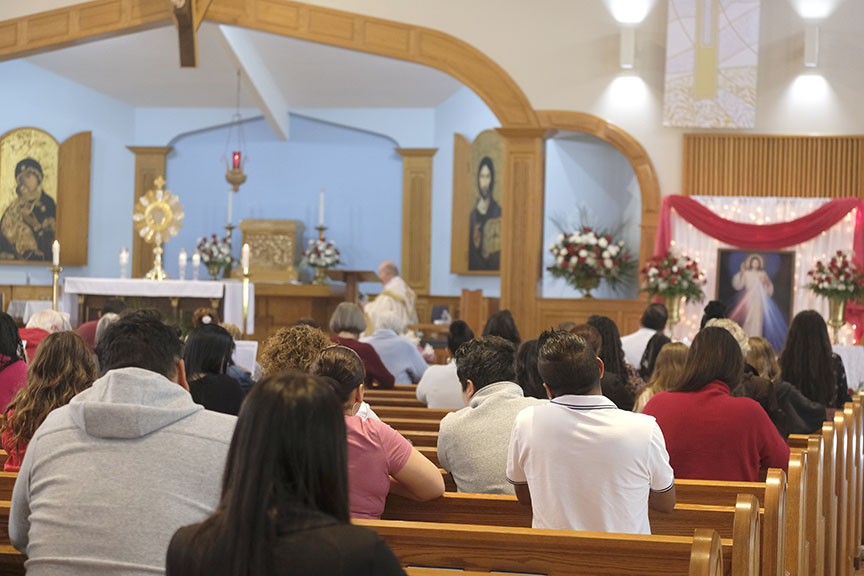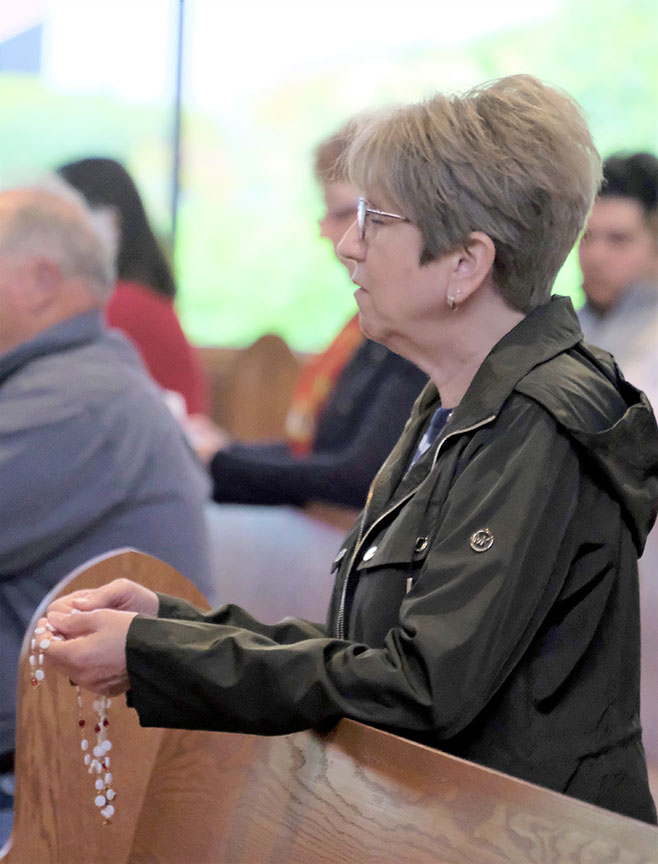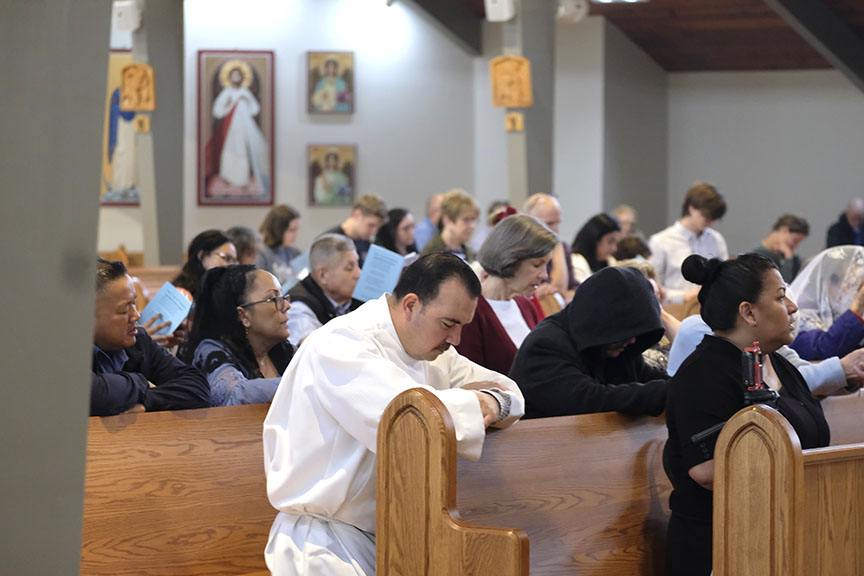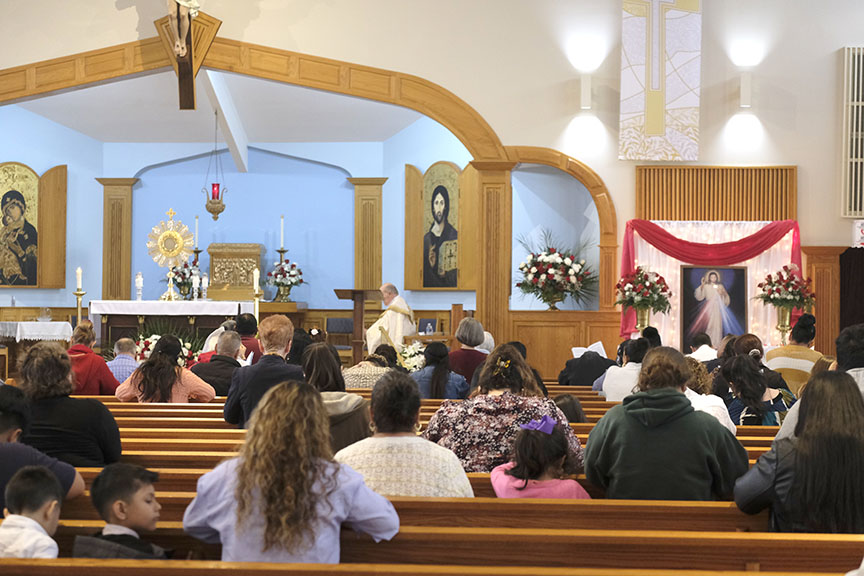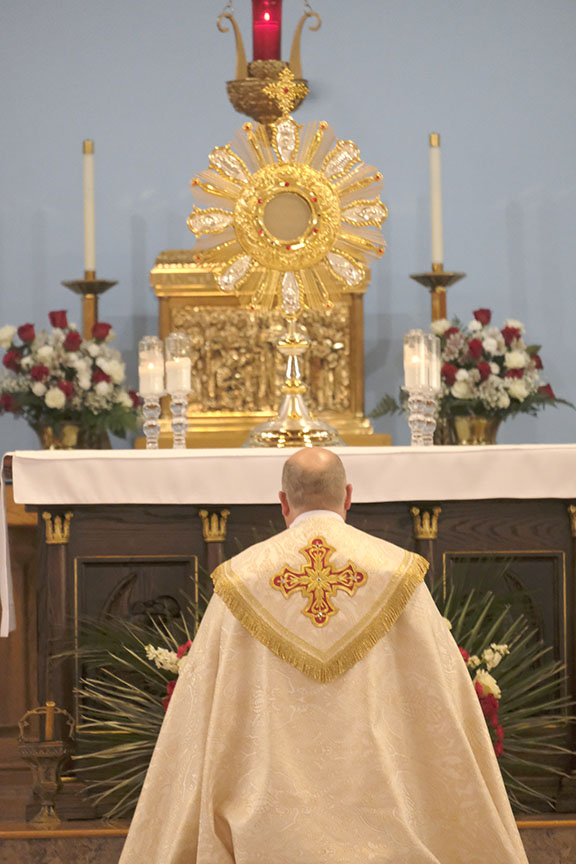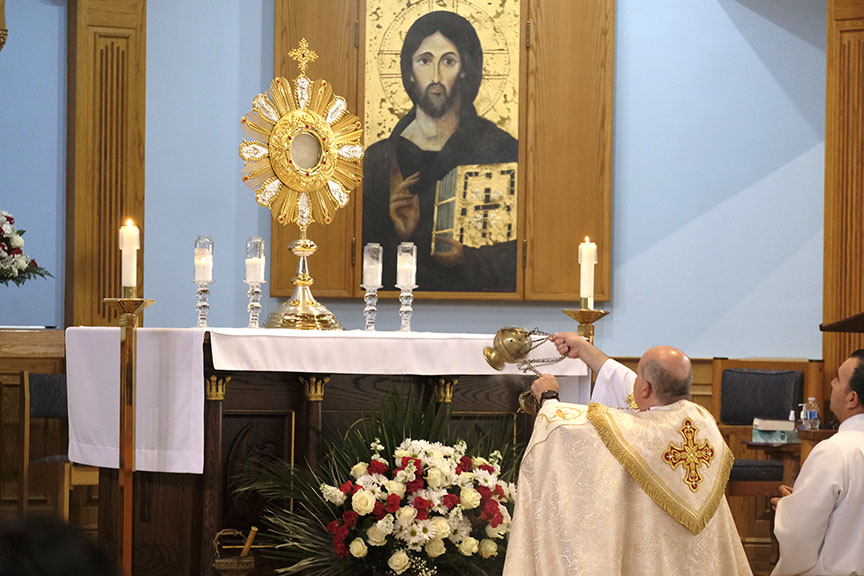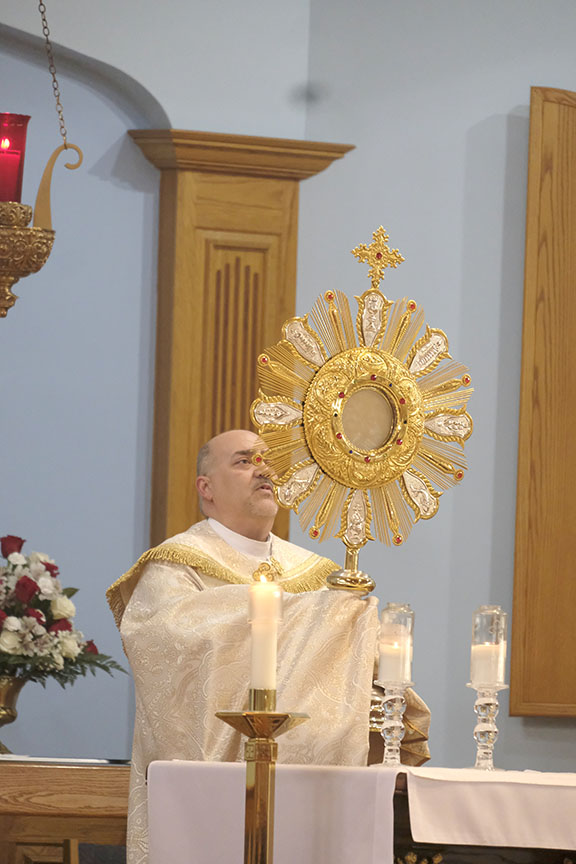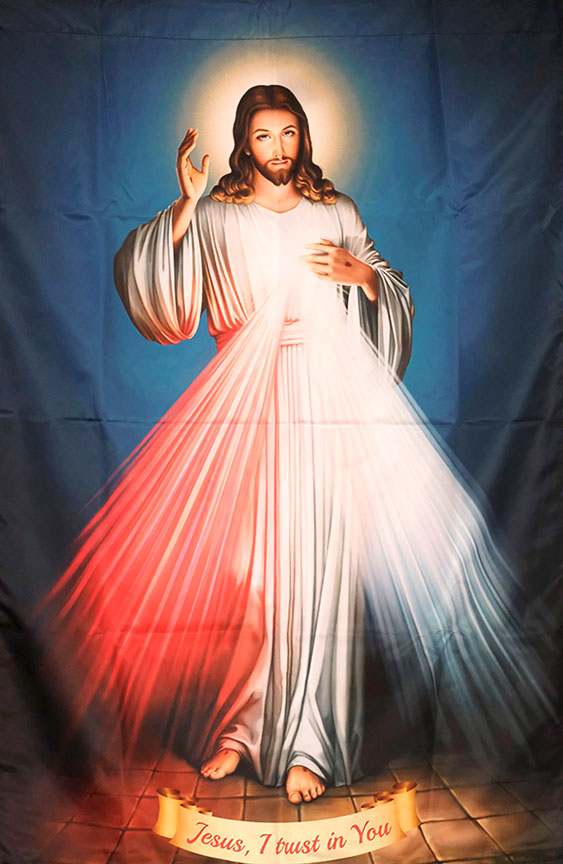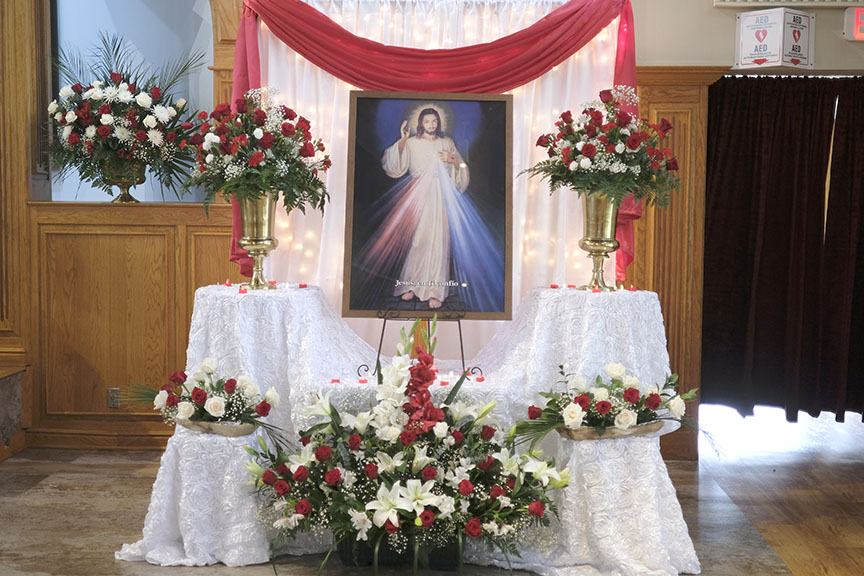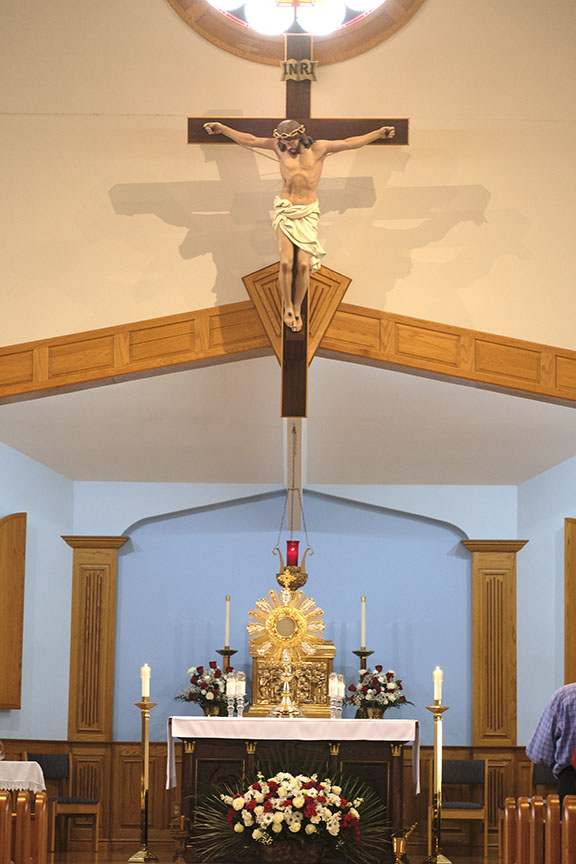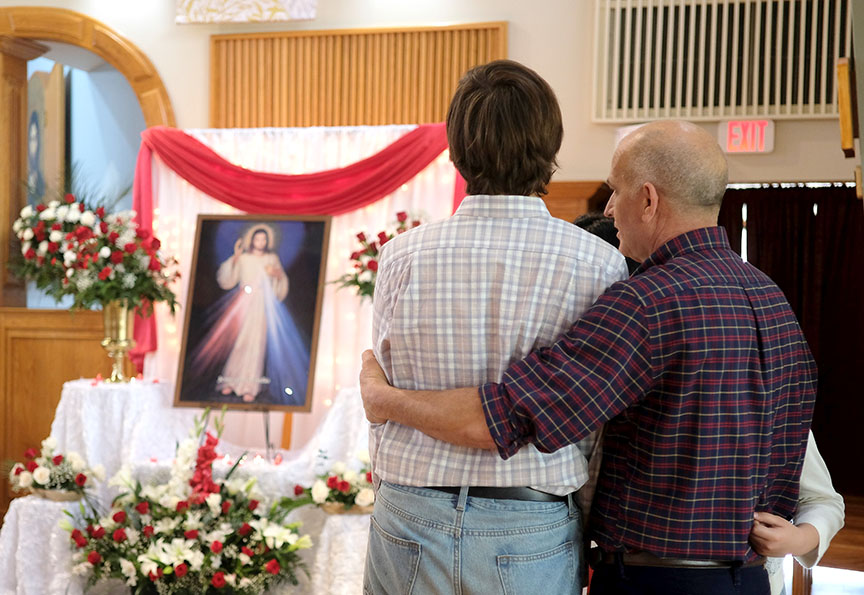
On Sunday, April 16, churches around the Diocese of Nashville celebrated Divine Mercy Sunday with special services asking for God’s mercy for individuals and the whole world. The services included praying the Divine Mercy chaplet and venerating the Divine Mercy image.
Among the churches who hosted Divine Mercy services were Cathedral of the Incarnation and St. Edward Church in Nashville; Church of the Nativity in Thompsons Station; Immaculate Conception Church in Clarksville; Our Lady of the Lake Church in Hendersonville; Sacred Heart Church in Loretto; St. Anthony Church in Fayetteville; St. Ignatius of Antioch Church in Antioch; St. John Vianney Church in Gallatin; St. Joseph Church in Madison; St. Matthew Church and St. Philip the Apostle Church in Franklin; St. Paul the Apostle Church in Tullahoma; and St. Stephen Catholic Community in Old Hickory.
In 2000, St. John Paul II proclaimed that the Second Sunday of Easter should be celebrated as Divine Mercy Sunday to draw the clear connection between the merciful love of God and the Paschal Mystery.
The devotion to the Divine Mercy is based on the writings and revelations of St. Faustina Kowalska, a Polish nun in the 1930s. The revelations from Jesus Christ were recorded in notebooks that were compiled as “The Diary of Saint Maria Faustina Kowalska.”
In the revelations, Christ asked for acts of mercy arising out of love for him, through deed, word, and prayer.
St. Faustina’s diary includes a passage in which Christ asked people to say a novena of the Divine Mercy Chaplet in preparation for the Feast of Divine Mercy. The novena is to begin on Good Friday. In one vision, Christ gave St. Faustina the words of the Divine Mercy chaplet and instructions on how it should be prayed, using the beads of a rosary.
According to her diary: “First of all, you will say one ‘Our Father’ and ‘Hail Mary’ and the ‘I Believe in God’ (the Apostles’ Creed). Then on the Our Father beads you will say the following words, ‘Eternal Father, I offer You the Body and Blood, Soul, and Divinity of Your dearly beloved Son, Our Lord Jesus Christ, in atonement for our sins and those of the whole world.’ On the Hail Mary beads you will say the following words, ‘For the sake of His sorrowful Passion have mercy on us and on the whole world.’ In conclusion, three times you will recite these words: ‘Holy God, Holy Mighty One, Holy Immortal One, have mercy on us and on the whole world.’”
“By this novena (of Chaplets) I will grant every possible grace to souls,” Christ told St. Faustina.
In another vision, Christ asked St. Faustina to have his image painted as he appeared to her. In the Divine Mercy image, Jesus is shown with his right hand raised in blessing and his left hand touching his chest. Two rays of light emanate from his heart, one red and the other white, representing the blood and water that poured from his side on the Cross. At the bottom of the image are the words, “Jesus, I trust in you.”
For more information about the Divine Mercy devotion, visit www.divinemercy.org.
